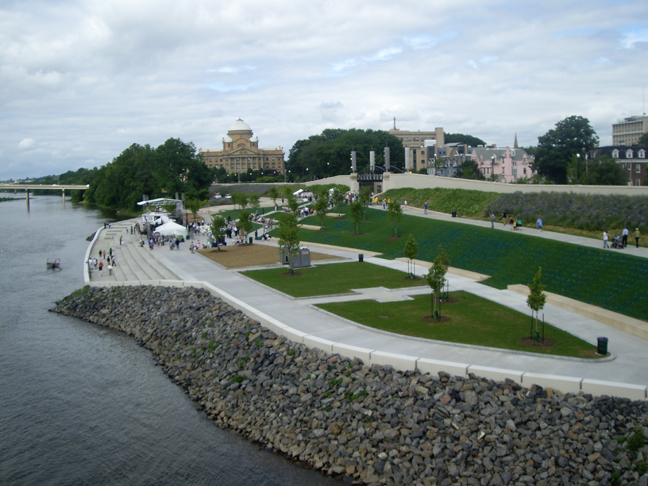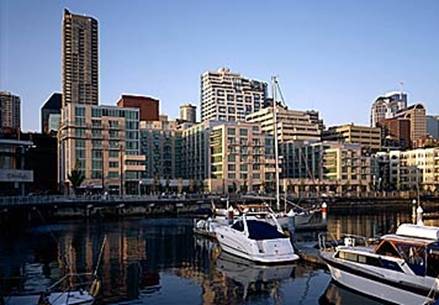Waterfront Center Advisory Board Member Bonnie Harken makes the case in the August/September issue of Planning magazine that urban waterfronts are where the challenges posed by climate change should be tackled. Writing in the "Viewpoint" column, Harken notes coastal cities face rising sea levels. Already there is wetland loss, shore erosion and saltwater intrusion, among other issues. She makes the sensible case that urban planners can lead the way in synthesizing the different scales involved and the multiple disciplines that will have to be employed.
Planning, August/September 2009
Kids and Prairie Plants
The managers of the North Point Marina in Wintrhop Harbor, Ill., took time out from getting ready for the summer boating season to work with students on an Earth Day project. Students from nearby Waukegan planted a natural prairie garden, part of an effort by the state to get school kids involved in environmental projects. The state-owned marina is a component of a state park. The sixth graders transformed a mud pile into a beautiful garden and planned to visit this summer to see how it was faring. The marina managers took the occasion to talk about the importance of protecting the waters of Lake Michigan.
Marina Dock Age, July/August 2009
Retail Success
The pattern for North New Jersey waterfront redevelopment has been to have first-floor retail under residential towers. With the recession and lower retail sales across the country, this approach faces a challenge. Developers report, however, some sucesses in landing tenants, more than they had hoped. Toll Brothers is opening a second tower of a Maxwell Place complex in Hoboken with 367 units and has successed in filling three quarters of 35,000 square feet of ground floor space, while still looking for a restaurant, as one example. All are providers of services rather than goods, like banking, child-care, hair salon and massage service. Port Imperials, all two miles of Weehawken waterfront, plans an 80,000 square foot retail promenade spread among three apartment buildings. It is 80 percent leased. Who said there was a recession?
The New York Times
Hamilton Thinks Big
Hamilton, Ont., Canada is upgrading its wastewater treatment facility to the tune of $550 million. To take five to seven years, the "bioreactor" installation will be three times as big as any such facility in the world. It will contribute to a cleaner Lake Ontario harbor. CH2M Hill, with AECOM, is the project designer.
Engineering News Record, Aug. 10, 2009

